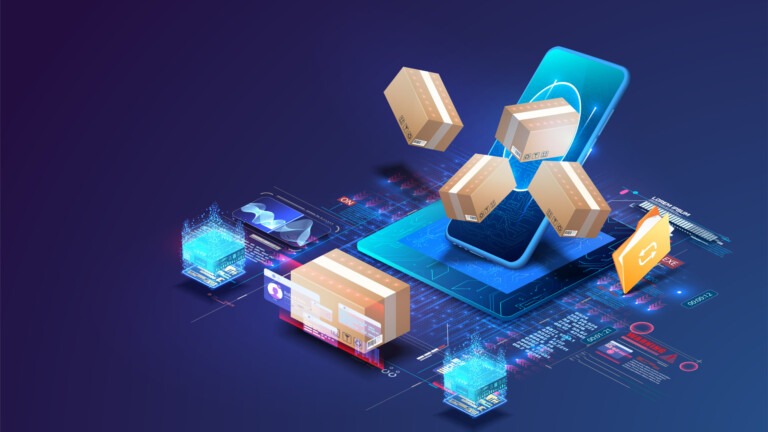Three Considerations When Implementing IoT in e-Commerce

In the early 1980s, a group of three students and a research engineer at Carnegie Mellon were trying to figure out how to remotely check the inventory and temperature of a soda machine they all used. The machine was enough of a walk from one of the students’ offices that they wanted to avoid trips that yielded warm soda – or no soda at all. This simple problem – thirsty graduate students looking for a more efficient way to buy cold drinks – led to the development of what is arguably the very first IoT device in history.
They designed and installed a system connected to the school’s computer network that tracked the length of time new bottles of soda had been chilling in the machine and the status of indicator lights on each column of bottles. With a little bit of ingenuity, anyone connected to the university’s ethernet could check the machine’s status to see whether or not they could expect a cold soda before they dropped in their change.
IoT applications in e-commerce have come a long way since this proto-IoT project, but still strive to meet the same fundamental goals: To provide a more efficient customer experience that keeps consumers coming back. Nowadays, however, consumers have higher expectations than just knowing whether a product is in stock or ready to be used. Consumers want to build relationships with the brands they frequent, and companies are turning to IoT solutions to support those connections.

The COVID-19 Era Accelerated Adoption of e-Commerce
The COVID-19 era forced many e-commerce companies to experiment with their own creative approaches to serving their existing customers and attracting new ones. Under the pandemic, lockdowns and supply chain challenges largely shifted consumer behavior away from brick and mortar locations and toward more online shopping solutions. According to Statista, the pandemic affected the shopping behavior of roughly 84 percent of people surveyed, while Gartner’s 2021 Digital Commerce survey revealed digital commerce now contributes 41.8% of revenue for consumer products and 40 percent of retail revenue.
Leading e-commerce companies embraced IoT solutions to manage inventory, save money, improve the customer experience, and boost security, all in service of attracting and retaining customers. But what are the key features that drive the adoption of IoT in e-commerce? Here are three things to consider when putting an IoT strategy in place to support a digital commerce business.
What Platform Should You Choose for Your e-Commerce Solution?
Implementing an IoT solution for e-commerce requires putting the right platform in place to support that strong customer experience. IoT platforms for e-commerce can comprise any of the following:
- Hardware development platforms that facilitate development of the actual physical equipment used in an IoT network.
- App development platforms that allow companies to build the mobile interfaces consumers will use to make purchases.
- Connectivity platforms that can connect devices to the cloud over different connectivity technologies, like WiFi, cellular, and LPWA.
- Analytics platforms that allow for efficient, effective, real-time collection, storage, and processing of massive amounts of data.
- End-to-end platforms that cover all parts of the IoT system, from sensors to devices to data.
When choosing platforms, companies must decide whether they can use an existing Platform as a Service (PaaS), or whether they need a custom-built, proprietary product. If a PaaS solution looks like the right approach, reports from Gartner and Forrester can provide external validation for and insight into the strengths and utility of particular platforms.
As with any IoT project, there are key questions to ask platform providers to make sure the project will be implemented successfully. For e-commerce projects in particular, it’s important to think about how flexible the platform might be. Given the current state of flux in the retail and e-commerce space, companies must ensure the platform they choose is as future-proofed as it can be.
Regardless of how your company implements an e-commerce IoT project, it’s critical to think through the customer experience and how the platform can best meet their expectations. For example, platforms can be built to more directly address customer needs for specific logistics and supply chain information, provide 24-7 customer service through chatbots, or better support personalization that improves customer experience.

How Does Good Data Management Support Customer Experience?
In e-commerce, properly managed data plays two critical roles. First, it allows companies to examine behavior like shopping patterns, and use that information to better market their products to potential and existing customers. This can let brands set themselves apart from competitors and tell their story more effectively to the right audiences.
Second, it opens the door to powerful personalization options. With the right data in hand, brands can build a strong relationship with their customers by providing personalized offers, even at scale. According to a 2021 McKinsey report, 71 percent of consumers now expect personalized interactions with the companies with which they shop, and 76 percent report frustration when they don’t get that individualized experience.
The data that e-commerce companies collect from IoT devices and networks comes from a variety of places within their operation. One obvious source is tracking levels of inventory and the location of orders as they are transported to customers’ homes and businesses. But all collected data does not have to come from company-controlled devices. Consumer devices, such as mobile phones and tablets, can also be a vital part of the data ecosystem. Companies can use learn a lot from observing what kinds of devices are connecting with their e-commerce website, using that information to tailor their UX toward the avenues with the highest traffic.
Companies that leverage AI to manage data produced through IoT solutions will have the advantage over those using a less technologically advanced approach. E-commerce businesses that have strategic, solid plans for using well-managed data to drive relationships with customers will also be better able to manage shifts in the marketplace.
That personal approach has the potential to make a tremendous revenue difference for businesses pivoting in this current climate. According to BCG, companies that shift just 25 percent of what they spend on mass promotions into personalized offers could see a 200 percent return on investment. They believe there is a $70 billion opportunity for retailers willing to invest in data management that builds stronger relationships with their consumers.
How Can IoT Security Practices Protect Consumer Trust?
Even the e-commerce companies with the strongest consumer relationships have to maintain the security of their IoT networks to protect the data collected. According to Ping Identity, 81 percent of consumers would stop engaging with a particular brand in the wake of a data breach. The same study found 63 percent of consumers hold companies responsible for protecting their data, even if they themselves relinquish access to their data by falling victim to a phishing attack or using an unsecured WiFi connection.
E-commerce retailers also must ensure they have a bot management solution in place to protect their revenue. An Imperva/Softprom research report, How Bots Affect E-Commerce, estimates that nearly 18 percent of traffic to e-commerce sites comes from bots. Bots can attack particular e-commerce sites to scrape prices and gain a competitive advantage for a rival site, to purchase high-demand products for resale elsewhere, or to access customer accounts. Aberdeen Strategy & Research estimates that 75 to 80 percent of e-commerce operational costs are negatively affected by actions taken by malicious bots, so this is not a problem to ignore.
End-to-end IoT network and device security must be taken into consideration at every stage of a system’s architecture. As those systems are deployed, companies must continuously evaluate them to be sure they are managing risk and thinking ahead. The responsibility for security does not lie solely with the team managing IoT devices and data, but with everyone involved in business processes. According to a 2020 Stanford University study, 88 percent of all data breaches are caused by human error, not a technology failure.
The National Institute of Standards and Technology believes the best practice for cybersecurity is to assume systems will be breached. By thinking ahead and staying aware of any potential incursion points, e-commerce companies will be better able to ensure consumer trust.

IoT Data Can Help Drive Great Customer Experiences
When building an IoT system to support e-commerce, it’s important to keep customers’ needs at the heart of the strategy. Building that foundation for a strong consumer relationship means considering how to develop infrastructure, manage data, and handle security in ways that provide a solid foundation for consumers’ confidence.
When consumers are able to navigate an e-commerce journey in ways that feel transparent, easy, secure, and personalized, they’re more likely to come back for more and build that long-term relationship that drives customer lifetime value. The IoT can support that by providing the data necessary to create a fantastic e-commerce experience.
………………..
Do you have questions about an IoT project? Speak with one of our experts today to learn how Soracom has helped more than 20,000 innovators deploy, scale, and secure their IoT projects.



